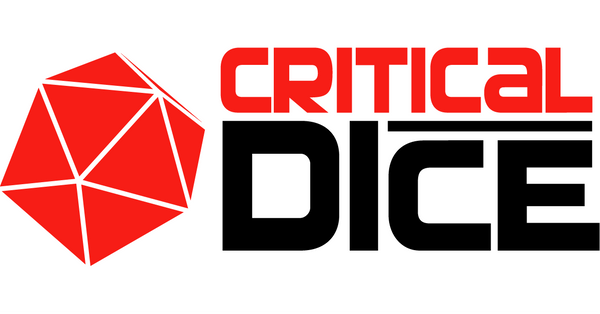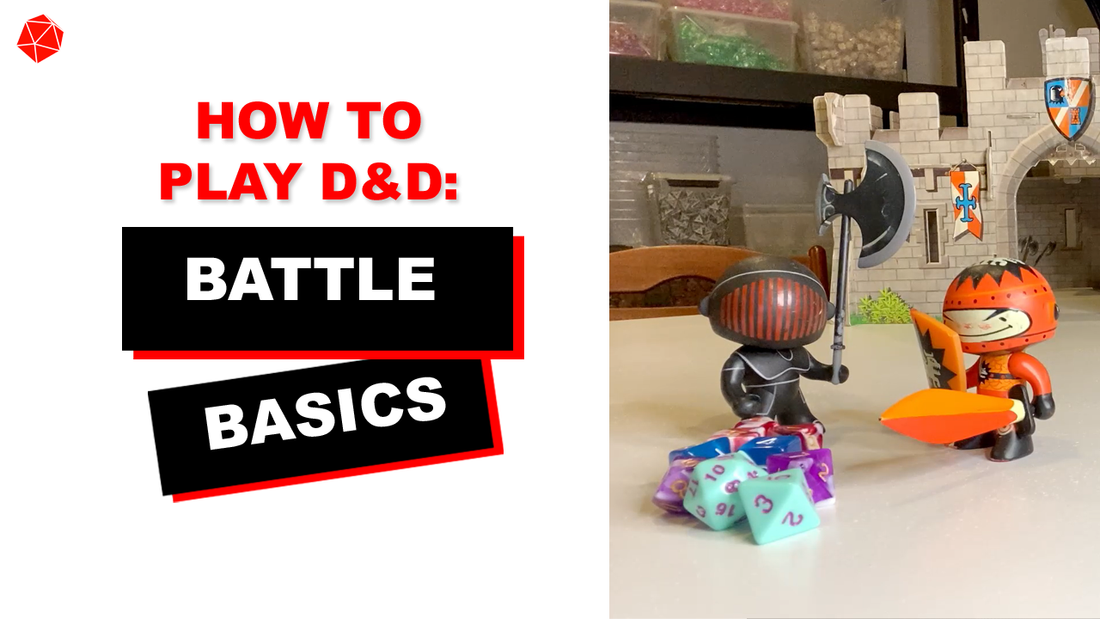When you learned how to play dungeons and Dragons someone taught you the rules of combat and probably left it at that. Today we're going to go back to school and learn some battle basics.
There are a lot of rules in dungeons and Dragons especially when it comes to combat. Combat is where the system really shines, is unique and there's a ton of things to remember. The basics are easy, what to do on your turn move you can attack you maybe have a bonus action, but it's not enough to know what you can do in a round of combat. You have to think about it like chess. If someone just thought you would all pieces did and that's where they stopped, you'd never get better at the game. You're never going to become a grandmaster. But if someone stops and teaches you the strategies around these moves, you will get a whole lot better.
(You can also watch the whole Video here:)
The Action Economy
Let me introduce you to a concept called the action economy. In a game like Dungeons and Dragons 5th edition, generally speaking, the side that has the most actions is going to win. This is especially true at lower levels. The more things that you can do to give your side more actions and the other side less actions is going to tip the scales in your favor. Imagine it this way, each side has the same number of people, the same number of actions, and are going to do about the same amount of damage. If you just go back and forth taking turns, who wins is really a roll of the dice. However, if you take away one of these people, now one side has more actions than the other. It's going to be more likely that your side will hit more often, do more damage, and will the day.
The action economy is the big idea that we're going to focus on and everything else in this article will relate back to that idea. If get more actions, you're going to win. So keep that idea in mind “The Action Economy
Stacking Damage
Let me pose a question to you. What does more damage?
- an enemy with full hit points.
- an enemy with one hit point.
Unless there's some weird special ability, the answer is obviously, they do the same amount of damage. The idea here is that you want to stack your damage not spread your damage out. It's really easy in the heat of combat to lose focus and start attacking enemies right in front of you. You need to stay focused and start stacking damage upon damage onto a single foe until they drop. Imagine what would happen if two or three members of your party all attacked one foe in a single round and they dropped. The next turn there's one less person to deal with. One less person to take actions for the opposing side. Then you can rinse and repeat, all the while moving you towards your general goal of tipping the action economy in your favor.
An ancillary idea is to always go for the spellcasters first. Spellcasters are amazing because their magic has the ability to change the tide of battle. They can change the shape of the environment, and can actually bring back another character that you've already killed with a healing spell. KILL THE CASTERS FIRST.
The Environment
Rarely do fights happen just on an empty field (or a plain plane if you will). Usually battles take place someplace interesting, like a forest, tavern, or a dungeon complex. You need to use that environment to your advantage. In D&D 5th edition you want to take advantage of your environment. Say a fight breaks out in the Tavern, go hide behind the bar to shoot arrows and duck down behind it. If a ton of enemies come down the hallway, plug that hallway and make sure they don't get past.
2 sub-points about the environment.
Don't forget to use cover. Cover is great because ½ cover gives you a + 2 to your AC and dexterity saving throws and ¾ cover gives you a + 5 to AC and dexterity saving throws. You can find cover almost anywhere.
Your casters can literally change the shape of the environment. Don’t be afraid to cast things like blade barrier, wall of fire or Plant Growth. You can put your enemies into these little funnels they have to get through or keep them from approaching your range attackers. Buff spells like these help the overall battle (not just fireball as much fun as it is).
Flanking
Advantage is one of the unsung heroes of the 5th edition system. Advantage great because it always feels good to get to roll 2-D20 and take the better one. Mechanically, advantage is interesting because it's like a little extra action hidden inside the real action. You get the chance to see two possible scenarios and pick the best one. Even though it's only one action, it's like you got to take two but pick the best one. It's similar to temporary hit points on top of your real hit point. Think of advantage as temporary actions on top of your real actions. If your table does flanking (it's optional rules so talk to your DM) you have advantage on all your attacks. It works for other people in your party, so get with a buddy and flank a foe. Flanking splits the focus of the bad guy and now have to contend with two different targets on the opposite sides.
An addendum about flanking, if you can flank so can your enemies. So make sure you are careful you're not letting yourself get surrounded unless you have a really good plan for that (like thunderstep).
Push & Prone
Lastly are what I like to call the two big Ps of combat, Prone and Push. When you take the attack action there's actually way more things than you can do other than just attack. There's a huge list including the push or the shove action. You can actually push a foe to either push then back five feet or knock them prone. It's an athletics check versus their athletics (or acrobatics check their choice). The push or shove action is great because you can push the enemy five feet into a hole or burning coals. You can also shove them prone. This is the second big P, prone. The prone condition is excellent because everyone who does a melee attack is going to get advantage. If you have extra attack feature this is especially great because you can choose to replace one of those attacks with a shove or push. It doesn't use it the whole action! You can push a character prone and then hit them with the other attacks.
This strategy is great if you have lots of extra attacks but it's especially good early on when you're doing it with a friend. You now have someone else who can hit them with advantage while they're on the ground.
I hope you enjoy these little tips for battle basics. Please leave a comment. I'd love to hear your thoughts or other strategies you use at your table.


